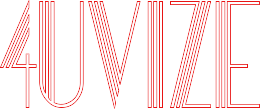The Kitting Process for Manufacturers: Everything Explained
The kitting is an ideal way for businesses to save time, money, and improve their inventory management. Kitting is as valuable as selection, packing, and shipment in the order fulfillment process. This is specifically important if you are dealing with products that have separate components that need to be combined before shipment.
Kitting outsourcing can save your time, provide a faster turnaround time and better customer service, streamlining the process. Packaging and selling a single item takes a lot of time and cost; kitting can help with this. In this article, we will explore the types, process, and industries benefiting from kitting.
What is Kitting
Kitting involves collecting a set of items into a kit. In manufacturing, the kitting process is to assemble everything in a unit to make a single product. This may include raw materials, tools, and other components needed for an item to be functional and sold as a single product.
The essential components of kitting are:
- Pre-assembling kits in the warehouse.
- Labeling kitting packaging.
- Efficient packaging for streamlined workflow.
- Ensuring compliance for specific industries.
See also: Top 3 Delhi Travel Attractions Tourists Love
Types of Kitting in Manufacturing
Here are the types of kitting:
- Order Fulfillment Kitting
In this process, similar individual items are packed together, so they can be shipped in a single kit. These kits are typically preassembled, allowing manufacturers to ship them as soon as they receive the order.
- Material Kitting
This type involves the gathering of all necessary items together to make a specific product. All the collected pieces are delivered to production to assemble them into a single product. This process demands precision as the components are put together in a specific order to go through a smooth production process.
- Private Label Kitting
Private label kitting is the process of outsourcing to a third party and combining products from different manufacturers into a single kit, which is sold under another company’s label. Warehouses store individual products from different providers and collect them upon receiving an order from customers.
Kitting Process
The kitting process includes the following steps:
Selecting the Components: The first step involves the selection of components and deciding how to combine them. The components are selected based on factors like grouping frequently bought items, new products, and promoting old stock to sell.
Assembling the Kit: This process is either carried out by the company’s staff or outsourced to a kitting contractor. In this process, the labeling is also done after assembling.
SKU: To identify the product in the warehouse, each kit is assigned a unique code known as SKU (stock keeping unit). This code allows us to keep track of sales.
Organizing the Items: For efficient and fast shipments, the companies pre-assemble the kits close together in the warehouse.
Order Processing: When the order is received, the kits are assembled together and are shipped as a single unit.
Tracking: The monitoring of the product shipped builds trust and makes it easy to have accurate management.
Industries Using the Kitting Process
The following industries use the kitting process:
- Online brands for combining products with gifts.
- Healthcare companies are packing test or sample kits and surgical tools.
- Corporate and marketing packaging, promotional, or giveaway kits.
- Beauty and cosmetic industry combining skincare with kits.

